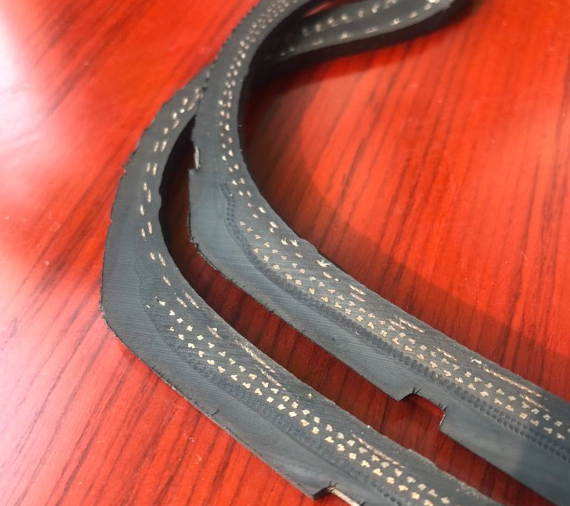The global challenge of end-of-life tire disposal is a pressing environmental and economic issue. With billions of tires reaching the end of their road life each year, traditional disposal methods like landfills and stockpiling are unsustainable, posing significant fire hazards and ecological damage. The key to unlocking a sustainable recycling future lies in the initial size reduction process. This article delves into the critical question of how do you cut tires, explores why the diamond wire saw is unequivocally the best tool for cutting up tires, and examines the valuable new life these processed materials can have.


A tire is a masterpiece of composite engineering, designed to be incredibly durable and resistant to wear. This very durability, however, makes it a nightmare to dismantle. A typical tire consists of:
This combination of tough, flexible rubber embedded with high-strength steel makes tires resistant to conventional cutting methods. They blunt blades, resist tearing, and can melt under high heat, gumming up equipment. Simply put, not just any tool will do. The process of how to cut them effectively is the first and most crucial step in the recycling chain.
Over the years, several methods have been employed to tackle the problem of how do you cut tires, each with significant drawbacks:
These limitations highlight the urgent need for a cleaner, more efficient, and more economical solution. This is where diamond wire saw technology enters the picture.
The transition to diamond wire saws represents a quantum leap in tire processing technology. It addresses nearly every shortcoming of previous methods, establishing itself as the modern best tool for cutting up tires. Here’s why:
Diamond, the hardest known natural material, effortlessly abrades through both the tough rubber matrix and the hardened steel cords within a tire. The continuous loop design of an endless diamond wire saw allows for uninterrupted cutting motion, significantly speeding up the processing time compared to stop-start methods. This results in a dramatically higher throughput, processing more tires per hour and reducing the overall cost per cut.
Diamond wire saws produce exceptionally clean and precise cuts. The kerf (the width of the cut) is narrow, minimizing material loss. This high level of precision is crucial for downstream recycling processes. Consistently sized chips and strips are easier to sort, clean, and feed into granulators or devulcanization machines. The clean cut also ensures the steel wire is sheared neatly, making it easier to separate and recover.
While the initial investment in a diamond wire cutting system can be substantial, the total cost of ownership is often lower. Diamond wires have a long operational life and require less frequent replacement than traditional blades. Coupled with lower energy consumption compared to waterjet or thermal systems and reduced downtime for blade changes, the long-term savings are significant. The efficiency gains from processing more material faster further enhance the return on investment.
This is a cold-cutting process. Unlike thermal methods, it generates no heat-affected zone, meaning there is no risk of burning the rubber or releasing harmful volatile organic compounds (VOCs) into the air. It also produces minimal dust compared to shredding, especially when equipped with water suppression systems. This creates a much safer and healthier environment for operators and aligns with strict environmental regulations.
Modern horizontal diamond wire cutting machinery is highly adaptable. It can be programmed to make precise cuts of varying depths and patterns, handling everything from passenger car tires to massive off-the-road (OTR) truck and mining tires. This process can be heavily automated, with tires being loaded, positioned, cut, and unloaded with minimal human intervention, boosting both safety and consistency.
Once a tire is cleanly and efficiently cut using a diamond wire saw, its components can be separated and transformed into valuable commodities, creating a circular economy.
The precision of the diamond wire loop ensures a clean cut that does not degrade the material’s inherent properties. This results in rubber chips with minimal heat damage and a consistent geometric size, which is critical for advanced manufacturing processes.
The precision cutting action of the diamond wire shears through steel cords with a clean edge, rather than pulling and fraying them. This is a game-changer for material recovery.
The ability to produce a clean, predictable material opens doors for innovation that shredded tire products cannot enter.
The diamond loop wire saw does not just cut tires; it meticulously deconstructs them. This precision is the key that upgrades tire recycling from a volume-based waste management operation to a value-driven material recovery industry. By preserving the integrity of the materials, it unlocks sophisticated applications, drives innovation, and creates a more economically sustainable and environmentally responsible path for end-of-life tires.
If you have any question, please contact us